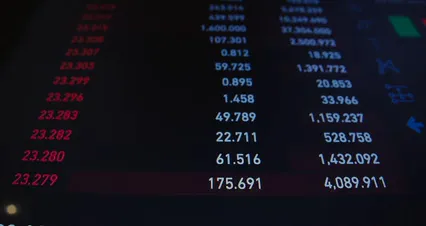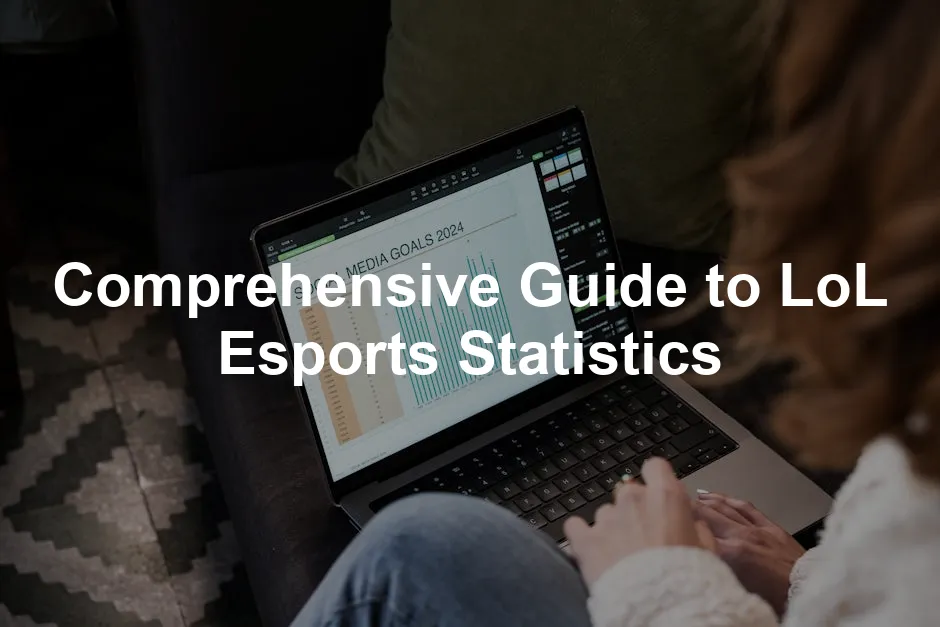Introduction
League of Legends (LoL) has firmly established itself as a titan in the esports arena. Since its launch in 2009, it has transformed from a casual game to a competitive powerhouse. Today, it draws millions of viewers, captivating audiences with its strategic depth and thrilling gameplay. But what really keeps fans on the edge of their seats? You guessed it—statistics!
Statistics play a crucial role in understanding the intricate ballet of player performance, team dynamics, and evolving game trends. They serve as the backbone of analysis, allowing fans, commentators, and analysts to dissect every moment of a match. Whether it’s tracking a player’s KDA (Kill/Death/Assist ratio) or a team’s win rate across tournaments, numbers tell stories that words alone cannot express.
In this article, we aim to provide you with an in-depth look at LoL esports statistics. We’ll cover historical data, current trends, and the multitude of ways that fans and analysts can harness this information. So, grab your favorite snacks and settle in! By the end, you’ll be well-equipped to impress your friends with your newfound knowledge of the statistical underpinnings of League of Legends esports.

The Evolution of LoL Esports Statistics
Historical Context
League of Legends esports began its journey in 2011, with the first World Championship held in Los Angeles. Back then, statistics were rudimentary, primarily focusing on match outcomes. Fast forward to today, and we can track a plethora of metrics, thanks to advancements in technology and data collection methods.
In the early years, the scene was filled with grassroots tournaments and community-driven events. As the game gained popularity, professional leagues emerged worldwide, like the North American League of Legends Championship Series (NALCS) and the European League of Legends Championship Series (EULCS). These leagues not only elevated the competitive nature of the game but also sparked a demand for more detailed analytics.
With each passing year, key milestones have shaped the landscape of LoL esports statistics. The introduction of the League of Legends API allowed for better data access, enabling analysts to derive deeper insights into gameplay. The 2014 World Championship, with its record-breaking viewer counts, further cemented the importance of accurate statistics. Teams began to recognize that data could inform strategy, leading to a shift in how they approached gameplay.
The rise of platforms like OP.GG and Leaguepedia has made it easier for fans to access real-time stats. These resources have transformed the way we watch and engage with the game. Now, statistics aren’t just numbers; they are a crucial part of the viewing experience.
As we continue to advance in this digital age, the significance of statistics in League of Legends esports will only grow. Teams and players are more data-driven than ever. Understanding this evolution is key to appreciating the depth and complexity of the competitive scene we enjoy today.
Importance of Data
In the competitive world of League of Legends (LoL) esports, data is more than just numbers; it’s the lifeblood of strategy and performance. Every click, every movement, and every decision made during a match can be quantified and analyzed. Coaches and analysts pore over statistics to craft winning strategies. They dissect player performances, identifying strengths and weaknesses. This data-driven approach allows teams to refine their gameplay and improve overall performance.
Moreover, statistics extend beyond the teams themselves. For fans and bettors, data shapes the viewing experience. Betting odds are influenced by player and team statistics, making data a cornerstone of the gambling scene. Fans can engage with their favorite teams on a deeper level, tracking player stats and match outcomes. This added layer of engagement enhances the overall experience, transforming casual viewers into passionate followers.

If you’re a fan of League of Legends and want to explore the universe even more, you might be interested in the League of Legends: The Complete Illustrated History. This book dives deep into the game’s lore and evolution, perfect for any true fan!
Understanding the importance of data in esports can be further explored through tips for effective data analysis in economics and statistics.

Key Statistics Categories in LoL Esports
Player Statistics
Performance Metrics
When analyzing player performance, several key metrics come into play. The KDA (Kill/Death/Assist) ratio is perhaps the most recognized. A high KDA indicates a player’s ability to contribute positively to their team’s success, while a low KDA often raises red flags. Creep Score (CS) is another crucial metric. It reflects a player’s farming efficiency, directly impacting gold income and item progression. A player with a high CS is often a formidable opponent.
Additionally, the Win Rate provides insights into a player’s overall effectiveness. It calculates the percentage of matches won, allowing teams to evaluate a player’s consistency over time. The combination of these metrics paints a vivid picture of a player’s impact in the game, serving as a valuable resource for teams and fans alike.
To truly immerse in the universe of League of Legends, consider grabbing the League of Legends: The Ultimate Guide. It’s an essential resource for players and fans alike!
Champion Pool
Champion diversity is essential in League of Legends. A player’s champion pool refers to the variety of champions they can competently play. Analyzing this pool offers insight into a player’s adaptability and strategic versatility. Players with a broad champion pool can surprise opponents with unexpected picks, giving their team a strategic edge.
Moreover, champion pool diversity can impact team dynamics. If a player is skilled with multiple champions, it opens up draft strategies for the entire team. On the flip side, a narrow champion pool can be a double-edged sword. While mastery of a few champions can lead to impressive performances, it can also limit a team’s options during critical matches.

Team Statistics
Team Performance
Team statistics play a significant role in understanding how well a group collaborates. Win rates are crucial here, revealing how often a team emerges victorious over a given period. Analyzing match histories helps identify patterns and trends. For instance, a team might excel against certain opponents while struggling against others. Recognizing these tendencies can inform future match strategies.
Tournaments add another layer to team performance analysis. Success in tournaments often hinges on consistent performance across multiple matches. Teams that can maintain a high win rate in tournament play demonstrate resilience and adaptability. By examining these statistics, analysts can gauge a team’s potential in upcoming competitions, providing fans with insights into their favorites’ chances of success.
And if you’re looking for some cool collectibles, check out the League of Legends: Jinx Funko Pop! Vinyl Figure. It’s a great way to celebrate your favorite champion!
With the rapid evolution of the LoL esports scene, these statistics not only help teams and players but also engage fans. The intricate web of player and team data provides a comprehensive view of the competitive landscape, ensuring that everyone—players, analysts, and fans—can stay informed and excited about the action.

Role and Position Statistics
In League of Legends, every role has its own flair and function. Let’s break down how these roles—Top, Jungle, Mid, ADC, and Support—bring unique performance metrics to the table.
Top Lane: The unsung hero of the rift! Top laners often boast high kill participation and solid CS (Creep Score) due to their solo nature. They tend to have robust survivability metrics, thanks to their tanky champions. A well-farmed top laner can turn the tide of battle!
Jungle: The stealthy shadow of the map. Jungle statistics often highlight objective control. How many dragons and Baron Nashors they secure can speak volumes. A jungler’s impact is measured not just in kills but in map pressure—ganking lanes and providing vision.
Mid Lane: The brains of the operation! Mid laners usually lead in damage dealt to champions. Their kill-death-assist (KDA) ratios can soar due to their central position and roaming capabilities. An effective mid laner knows when to push, when to roam, and when to back off.
ADC (Attack Damage Carry): The damage dealer extraordinaire. ADCs are all about scaling and positioning. Their performance metrics often focus on damage per minute (DPM) and CS. A high DPM indicates a player who can output consistent damage during fights, a must-have for any team.
Support: The backbone of the team. While they may not always shine in KDA, their impact is crucial. Statistics around wards placed and vision score are key indicators of a support’s effectiveness. A great support can enable their team to shine, often acting as the unsung hero behind the curtain.

Match Statistics
Game Outcomes
In the thrilling world of League of Legends, match formats like Best of One (BO1), Best of Three (BO3), and Best of Five (BO5) can sway outcomes dramatically. In a BO1, there’s no room for error—one misstep could cost the game. Meanwhile, BO3 formats allow teams to adapt and learn from their mistakes. They can adjust strategies between matches, leading to more engaging gameplay. Finally, BO5 formats test endurance and consistency. Teams that excel here often demonstrate superior adaptability and teamwork.

In-Game Metrics
In-game metrics are the lifeblood of strategic analysis. Gold difference is a key stat, as it directly correlates with a team’s ability to purchase items and secure objectives. Objective control, such as dragons and towers, showcases a team’s strategic depth. Teams that excel in these metrics often find themselves ahead in the game. Lastly, damage dealt metrics allow analysts to pinpoint which players are having the biggest impact—whether through securing kills or dealing damage during team fights, these numbers tell the story of who is truly carrying the game.

Changes in Meta
League of Legends is anything but static. With each new patch, champion stats undergo a transformation, thanks to the relentless efforts of Riot Games. Patches introduce tweaks, buffs, and nerfs, shifting the balance of power among champions. This constant evolution keeps players on their toes and adds layers of strategy to the game.
For instance, consider the rise of champions like Aphelios and Sett in recent seasons. Their surge in popularity showcases how a simple patch can change the game’s landscape. Teams adapt their compositions based on these shifts, leading to exciting gameplay. The meta isn’t just about individual champions; it’s about how they synergize within team compositions. As certain champions gain favor, team strategies morph accordingly. For example, if a patch makes tanks more viable, expect teams to lean heavily on these beefy front-liners.
Moreover, the fluctuating champion pool showcases the diversity of gameplay. Players must be versatile, ready to pivot between their favorite picks and the newly buffed champions. This adaptability is what keeps the competition fresh and thrilling. Fans eagerly anticipate each patch note, hoping to spot the next big trend.

Viewer Engagement and Statistics
Statistics are the secret sauce in enhancing viewer engagement. Imagine watching a match with real-time data at your fingertips. Platforms like OP.GG and Leaguepedia provide live stats that elevate the spectator experience. Fans can track KDA ratios, gold differences, and objective control as matches unfold. This data isn’t just numbers; it adds depth to the viewing experience.
Moreover, real-time analysis fuels discussions among fans and commentators alike. Picture this: a nail-biting moment occurs, and instantly, viewers can see how a player’s performance stacks up against historical data. This level of engagement turns casual viewers into informed fans, ready to debate strategies and outcomes.
Social media buzzes with insights as fans share their thoughts on team compositions and champion performances. The integration of statistics into the viewing experience has transformed how we consume esports. It’s no longer just about watching; it’s about understanding and engaging with the action.
Platforms offering live stats are reshaping the spectator landscape. They provide critical insights that enhance the overall experience, allowing fans to follow their favorite teams with a newfound appreciation. As esports continue to grow, expect this trend of data-driven engagement to flourish.

Using Statistics for Team and Player Analysis
Tools and Resources
When it comes to analyzing League of Legends esports statistics, the right tools make all the difference. Several platforms stand out in providing robust data for fans and analysts alike. OP.GG is a fan-favorite, offering a wealth of player stats and match histories. Leaguepedia serves as a comprehensive wiki, covering everything from player profiles to tournament results. For official data, Riot Games has its own esports data portal, ensuring accuracy and reliability.
Accessing reliable data is crucial for informed analysis. Statistics from questionable sources can lead to misleading conclusions. Fans must prioritize credibility when evaluating player performance and team dynamics. The data from these platforms contributes to a deeper understanding of gameplay. It helps analysts identify trends, player strengths, and potential weaknesses.
Statistics empower teams to refine their strategies. Coaches analyze data to make informed decisions about champion picks and team compositions. This data-driven approach enhances their chances of success. Fans can also leverage these resources to gain insights into upcoming matches, player performance, and team strategies.
In the ever-evolving landscape of League of Legends esports, having access to accurate statistics is essential. Whether you’re a casual viewer or a die-hard fan, utilizing these tools can enhance your understanding of the game. So, dive into the data, and get ready to elevate your esports knowledge!

Case Study: Successful Teams
In the realm of League of Legends esports, few teams shine brighter than T1 and G2 Esports. These powerhouses have mastered the art of leveraging statistics for continuous improvement. T1, for example, uses data analytics to assess their gameplay meticulously. They track metrics such as gold difference, kill participation, and objective control. This approach helps them identify patterns and weaknesses, allowing for targeted practice and strategy adjustments.
G2 Esports follows suit with their innovative use of data. Their coaching staff analyzes opponent statistics before matches to predict strategies. By understanding their rivals’ tendencies, G2 can devise counter-strategies tailored to exploit weaknesses. This data-driven decision-making has led to impressive tournament performances and consistent top-tier placements.
One notable instance was during the 2023 Mid-Season Invitational. G2 analyzed data from previous matches to adapt their champion picks and strategies. This preparation allowed them to secure a stunning victory over several formidable opponents. Their success illustrates how effective statistical analysis can lead to enhanced performance and strategic prowess.

Predicting Outcomes
Fans and analysts can tap into statistics to predict match outcomes and player performances. By examining historical data, such as win rates and player matchups, enthusiasts can make informed guesses about who might come out on top. For instance, if a player has a high win rate on a particular champion against a specific opponent, it’s likely that they’ll perform well in an upcoming match.
Analysts use advanced metrics like KDA and CS to assess player form. A player consistently achieving high KDA ratios is often seen as a reliable performer. In contrast, a slump in CS could indicate struggles in farming, potentially impacting their team’s chances. By piecing together these statistical puzzle pieces, predictions become more educated and grounded in reality.
Moreover, betting enthusiasts utilize these statistics to guide their wagers. Odds often reflect a team’s statistical strengths and weaknesses. A well-informed bettor can leverage this knowledge for a more strategic approach to esports betting, increasing their chances of success. In this data-driven landscape, understanding the numbers can be the key to unlocking victory, whether in the arena or at the betting table.
And if you’re looking to upgrade your gaming setup, consider the Razer DeathAdder V2 Gaming Mouse. It’s perfect for precise gameplay and comfort!

Please let us know what you think about our content by leaving a comment down below!
Thank you for reading till here 🙂
All images from Pexels




